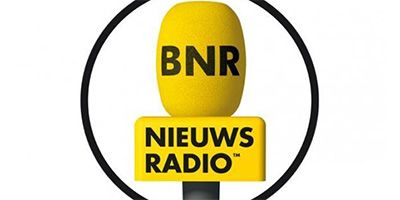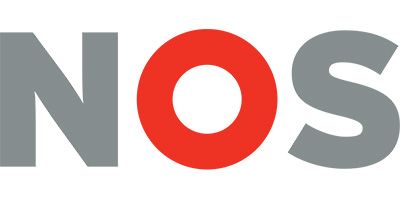
The Category Entry Point (CEP) Guide: Everything Your Brand Needs to Know About CEPs
From a Cup a Soup around four o'clock to a piece of chocolate you crave when you need a bit more psychological comfort. These are all examples of how Category Entry Points (CEPs) guide us – consciously and unconsciously – towards certain brands.
Byron Sharp highlighted the importance of CEPs in his book How Brands Grow. Brands associated with many CEPs in the brain are chosen more frequently compared to other brands. To grow as a brand, it is essential to understand how CEPs work, how to measure them, and how to create rich CEP networks in the customer's brain through marketing activities.
In this blog, we outline everything you need to know about CEPs.
What are Category Entry Points?
A Category Entry Point (CEP) is a cue that makes consumers think of your brand. These can be both external and internal signals, possibly in combination with each other.
External signals
- Time of day: you eat a specific brand of cereal for breakfast
- Location: you enjoy a pre-packaged sandwich on the train
- Social context: you drink a specific beer brand with colleagues at a gathering
- Activity: a drink for after exercising
Internal signals
- Motivation: people who value status buy a certain car brand
- Emotion: comfort food when sad
The CEP often forms the basis of the customer's decision-making process, whether it's a planned purchase or a spontaneous, emotion-driven purchase. The more usage situations a brand can associate with itself, the greater the chance that consumers will think of this brand and notice it in buying situations.
What do Category Entry Points have to do with Mental Availability and Brand Assets?
If you know the term Category Entry Point (CEP), there's a good chance you've also heard about the related topics of Mental Availability and Brand Assets. All these topics were popularised by Byron Sharp and help your brand become part of the consumer's decision-making process.
Mental & Physical Availability
People are generally lazy and habit-driven. We like to buy products and brands without it costing us physical or mental effort. In fact, empirical research has shown a direct link between buying behaviour and sales volume. To grow as a brand, you must make it easy for the customer.
Physical Availability
You first build this ease with physical availability. The easier it is for the consumer to physically access your brand, the greater the chance they will actually purchase it. Physical availability is determined by:
- Number of sales channels
- Online findability
- Shelf height in the store (just below eye level is the optimal position)
- Number of facings of the product side by side
Mental Availability
Mental Availability means that the customer automatically thinks of your brand in buying situations. It's about relevant memory traces in the customer's brain that activate a brand at the crucial moment.
Again, humans are creatures of convenience. Our brain is lazy too, so assume that the customer will not make any active effort to dig into their memory for your brand. Therefore, it's crucial to activate the right neural networks through effective marketing that bridges the sometimes long path from advertising to purchase.
Byron Sharp distinguishes two basic characteristics of mental availability: recognisability and relevance. Recognisability requires your brand to have distinctive features, such as a logo, colours, visual style, slogan, brand sound, etc. These features are also known as Distinctive Brand Assets (DBAs). Brand Assets are essential to be the first in the customer's sight in buying situations. In this online guide, you will find everything about developing, measuring, and strengthening strong brand assets.
But besides brand assets, it's essential that the choice for a brand feels relevant for the specific situation the customer is in. That's exactly what Category Entry Points provide.
What is the difference between Distinctive Brand Assets (DBAs) and Category Entry Points (CEPs)
Distinctive Brand Assets (DBAs) and Category Entry Points (CEPs) are related but entirely different constructs. They differ in their purpose, usual numbers, and the importance of meaning and uniqueness.
A brand asset is of the brand. They are the visual, auditory, and textual features that help you stand out from competitors. Uniqueness is crucial: your brand, not your competitors, must be associated with the asset.
|
Brand Asset |
Category Entry Point |
|
|
Purpose |
Recognisability |
Relevance |
|
Number |
5-10 |
Dozens |
|
Uniqueness |
Essential |
Unimportant |
|
Meaning |
Unimportant |
Essential |
Gratis Webinar: Branding & Neuromarketing 🧠
Merken zijn niets anders dan geheugennetwerken in ons brein. In het webinar leer je de neurale basis van merken en – belangrijker nog – wat dit betekent hoe je merken sterker kunt maken.
De 60 minuten durende webinar is nu terug te kijken!
Bekijk de webinar via deze link <
How can you measure Category Entry Points?
Research into Category Entry Points (CEPs) involves two crucial phases, which can be conducted independently.
First, it is useful to conduct exploratory research into all relevant situations in which consumers would buy the category. This is qualitative research, primarily using interviews.
Next, you want to know how strong your brand's CEP portfolio is, possibly compared to competitors. This is a more quantitative research form, where you can use questionnaires or, better yet, implicit reaction time methods that directly measure the strength of associations in the unconscious system 1 of the brain.
Step 1- Identify relevant Category Entry Points
To get a good picture of the relevant CEPs in a category, we start with qualitative exploratory research. Use in-depth interviews that delve into the When, Where, With What, With Whom, and Why.
As an interviewer, be aware of the shortcomings of conscious questioning: answers can easily be distorted by rationalisations and social desirability. You get the most value from interviews by having people describe moments from the past and probing further with the five W's.
Important: during this research phase, you focus on the category. The brands follow in step 2.
Examples of When questions
- Are there specific times during the day when you are more likely to buy/use [category]?
- How does your use of [category] differ per day/week/season?
- Are there specific activities that precede/follow the use of [category]?
Examples of Where questions
- In which locations do you use [category]?
- How does your use of [category] differ at home and outside?
Examples of With What questions
- What other products do you use with [category]?
- How do you combine these products with each other?
Examples of With Whom questions
- With whom do you like to use [category]?
- Did you consult others before purchasing [category]?
Examples of Why questions
- For what purpose do you buy [category]? (motivated why)
- How did you feel before/during/after using [category]? (emotional why)
The goal of the interviews is not to obtain a quantitative ranking of usage situations. You use the interviews to separate the wheat from the chaff in the most relevant moments for your product in the customer's life.
Step 2- Measure and monitor how well your brand scores on these Category Entry Points
After step 1, you have a list of the most important CEPs within the category. Now you also want to know how your brand and the main competitors score on these. You can use traditional methods like a survey, or more eloquent neuromarketing methods that also make the unconscious system 1 response measurable.
Survey
In a survey, you ask people to indicate for each brand to what extent each CEP matches it. This is often done with a forced choice (matches/does not match) or on a scale.
While the survey provides insight into the major differences between brands, many nuances in CEP associations are lost because they reside in the unconscious.
Implicit measurement with Intuitive Response Test (IRT)
Brands are nothing more than clusters of associations in our brain. To know to what extent a brand possesses a specific CEP, it is essential to measure the emotional and automatic response.
However, you cannot simply ask people about the often subtle differences in brand-CEP associations. Since this is a largely automatic and lightning-fast process in our brain, we are hardly aware of it. Classical questioning would therefore yield incorrect answers.
The Intuitive Response Test (IRT) breaks through this conscious barrier by showing the respondent various combinations of brands and attributes at a high pace. The respondent indicates for each CEP to what extent it does or does not fit the brand. We measure not only the respondent's opinion but also the speed with which that opinion is given (in milliseconds). And it is precisely in that reaction speed that much valuable information is hidden. The stronger the association, the faster a person is able to respond.
At Unravel, we regularly conduct implicit association tests for worldwideclients. Feel free to contact us for more information.
Category Entry Points Metrics
When you want to strengthen your brand's Category Entry Points (CEPs), it's helpful to monitor metrics that reflect your status. Based on the above-described CEP research, you can calculate the following three metrics:
- Mental Market Share: The % of CEP associations your brand has as a fraction of the total number of CEPs within the category
- Mental Penetration Rate: % of category buyers that associate your brand with at least one CEP
- Network Size: Average number of CEPs linked to your brand (measured among people who know the brand)
How can you build and strengthen Category Entry Points?
Strong brands continuously work on expanding their Category Entry Point (CEP) portfolio. Once you have researched the unique CEP profile of your brand and the competitor, it's crucial to strengthen your CEPs where it hits the competition hardest. And although every touch point between brand and customer can potentially sprout a new CEP, this is primarily the domain where advertising campaigns are of vital importance.
Even large brands continuously tap into new CEPs. An example is McDonald's and breakfast. For decades, the yellow fast-food giant was the place for your quick bite after noon, but few thought of getting their croissant and cappuccino there. That changed when they tapped into the breakfast CEP through aggressive advertising campaigns and in-store communication.
How can you effectively expand your CEP portfolio as a brand? It makes no sense to make your brand connect with a CEP (i.e., breakfast). You must make the breakfast connection with your brand. The CEP evokes the brand. Not the other way around. Below we provide the most important practical tips to achieve this.
1. One CEP per expression
The biggest pitfall is when a brand becomes greedy and wants to cram as many CEPs as possible into a marketing expression. It is more effective to focus on a single CEP within one touch point. Neuroscientific research shows this is most beneficial for memory formation. The more an expression, the more the neural effect will dilute to nothing.
Multiple CEPs in a campaign can work – but do this in separate expressions. This way, each individual expression makes maximum impact on memory formation in the brain.
2. Mass media communication
Large-scale campaigns are still the most cost-effective vehicle for expanding your CEPs. Due to their broad reach and relatively strong message transmission, they are ideally suited for branding-oriented campaigns such as strengthening your CEP structure.
3. Don't forget your Distinctive Brand Assets (DBAs)
Even if you have the perfect CEP-enhancing campaign, without strong recognisable assets, it will be aimed at blind eyes. A rod with some bait helps you catch a fish, but separately you have nothing more than a stick or a worm. CEPs (the relevance) need DBAs (the recognisability) – and vice versa. CEP + DBA = mental availability. Only together will they make your brand stick in memory and truly influence decisions in buying situations.






